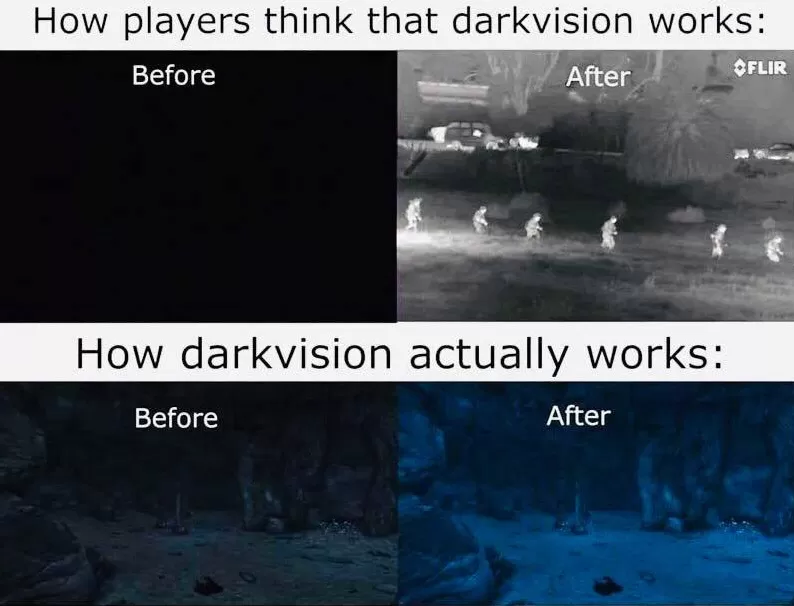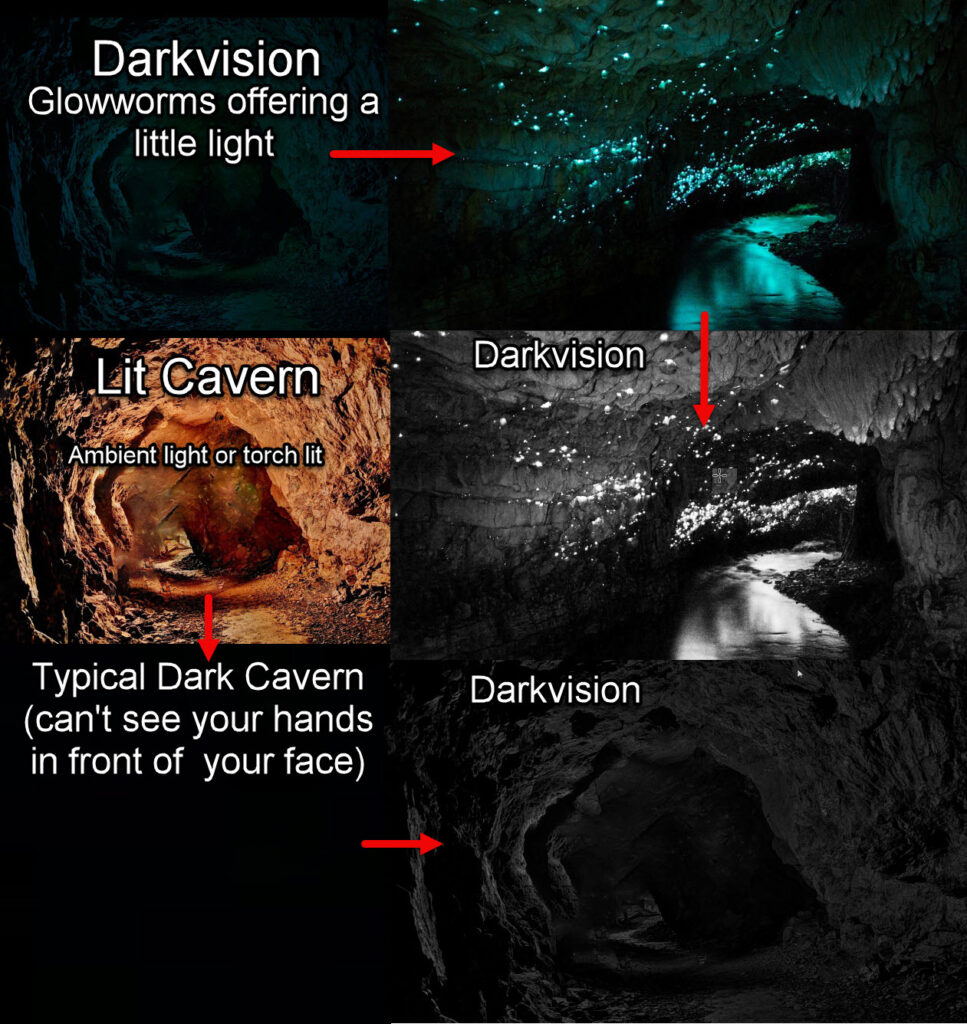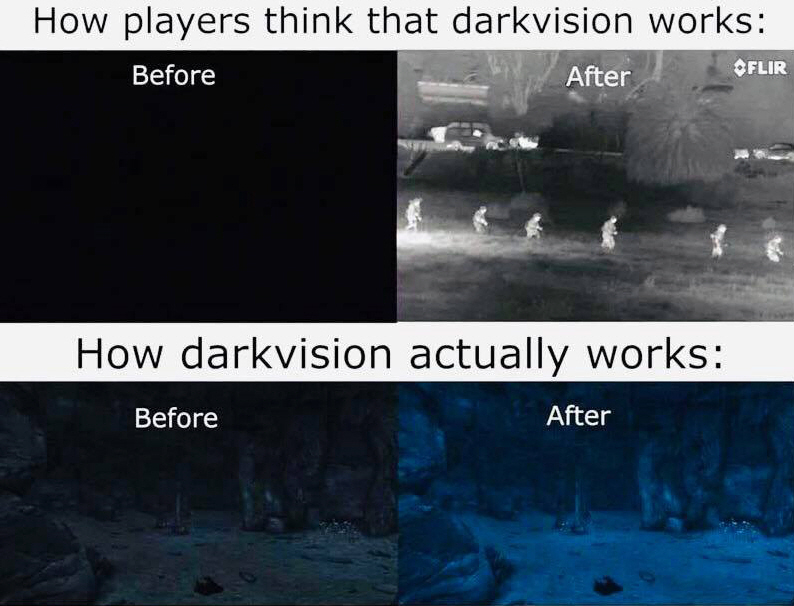
In the vast multiverse of Dungeons & Dragons (D&D), players and their characters are bound to encounter various challenges in dark caves, moonless nights, and shadowy dungeons. Thankfully, some characters possess the unique ability called "darkvision," which enables them to see in complete darkness. This guide delves into the concept of darkvision, exploring its implications, advantages, disadvantages, and best practices.
What is Darkvision?
Darkvision is an ability that allows certain creatures and player characters to see in complete darkness as if it were dim light, albeit usually in shades of gray. This means that while they can discern details and objects, they usually can't distinguish colors in the dark. For instance, if a dwarf (a race known to have darkvision) were to inspect a multi-colored tapestry in a pitch-black room, they'd see the patterns and intricacies but not the vibrant colors.
Examples of Creatures and Races with Darkvision:
- Dwarves: These sturdy underground dwellers have darkvision up to 60 feet.
- Elves: Especially Drow or Dark Elves, who have adapted to their underground homes.
- Goblins: These sneaky creatures use their darkvision to launch surprise attacks during the night.
- Nocturnal Predators: Creatures like owlbears or some types of dragons, which might hunt during the night.
Advantages of Darkvision:
- Advantage in Stealth: Characters with darkvision can maneuver in complete darkness, making them harder to detect by creatures without this ability.
- Safety in Exploration: Exploring dark caverns or dungeons without a light source reduces the risk of attracting unwanted attention.
- Tactical Advantage: In combat, these characters can operate without a light source, which might be a strategic asset against enemies that rely on sight.
Disadvantages of Darkvision:
- Limited Range: Darkvision usually has a specific range, often 60 feet. Beyond this range, everything is as dark as it would be for those without the ability.
- Monochromatic Vision: Seeing only in shades of gray can be a disadvantage in scenarios where color differentiation is crucial.
- Over-reliance: Players may become too reliant on darkvision, forgetting to be cautious in unfamiliar terrain.
How to Use Darkvision Effectively:
- Stealth Operations: Take advantage of dark areas where enemies without darkvision are blind. Move quietly and strike strategically.
- Scouting: Send characters with darkvision ahead to reconnoiter. They can report back without the need for torches or light spells that might give away the party's position.
- Defensive Positioning: Set up ambushes in dark areas. Without the need for light, you can surprise foes.
How Not to Use Darkvision:
- Assuming Universal Sight: Just because one party member can see doesn't mean everyone can. Avoid splitting the party based solely on vision capabilities.
- Forgetting About Other Senses: Enemies might have other ways of detecting you, like hearing or smell. Just because you're in the dark doesn't mean you're undetectable.
- Ignoring Light Sources: While characters with darkvision don't need them, carrying a torch or casting a light spell can benefit party members without darkvision.
Darkvision is a valuable tool in the D&D universe, offering strategic and survival advantages in various situations. However, its power is balanced by its limitations and potential pitfalls. Successful adventurers know when to leverage this ability and when to rely on other resources and strategies. As with all aspects of D&D, understanding and creatively using character abilities like darkvision can make the difference between a triumphant tale and a tragic end.








